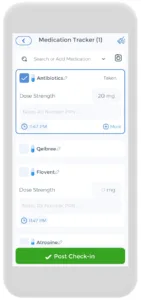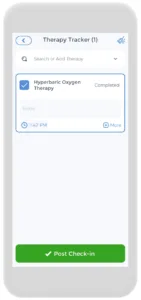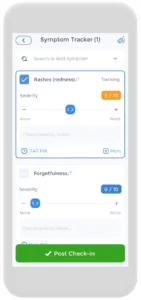
Are you struggling with Lyme disease? Recently, Lyme disease has become more common across In North America. It currently affects millions of people around the world. Some of its symptoms may include tiredness, muscle and joint pain, and neurological problems. All of these can make one’s daily life more difficult. While there are treatments, they often have limited effectiveness. Patients often continue experiencing symptoms even after therapy, which can be extremely frustrating.
However, with emerging new technologies, there are alternative therapies available. Hyperbaric chamber therapy is one of these technologies. Essentially, patients breathe in pure oxygen. This seemingly simple treatment has been shown to reduce inflammation, improve circulation, and more. For a while now, hyperbaric oxygen treatment has been used to treat different conditions. Recent research has shown that it can actually be beneficial for Lyme disease too!
In this article, we will first discuss the basics of Lyme Disease, including what it is, its symptoms, and its management. This way, you can get a better understanding of what this commonly talked about disease really is. Then, we will introduce you to the concept of hyperbaric oxygen therapy, including how it works and what the research shows about its effectiveness. Finally, we will tie the two together and provide you with some valuable information about the use of hyperbaric oxygen therapy for treating Lyme disease. Hopefully, this will provide you with some valuable information that can help you make more informed decisions about your health![1][2][3][4]
Lyme Disease: Trouble from Ticks
Basics of Lyme Disease (Lyme Borreliosis)
Lyme disease is caused by the bacteria Borrelia burgdorferi. It originates in rodents and often spreads to humans by deer ticks that bit an infected rodent.
In recent years, due to changing climate, Lyme disease has become more common in Northern USA and Canada. The CDC (Centers for Disease Control and Prevention) estimates that there are 300,000 cases of Lyme disease in the United States every year. This does not include unreported cases. Other parts of the world that experience Lyme Disease include Europe, Asia, and Australia, although the United States has it the worse.
Once infected, a Lyme patient may experience a wide range of symptoms including fever, headache, cognitive impairments, and tiredness. There is often a rash on the skin called erythema migrans. While these symptoms are mild, untreated Lyme disease can lead to more serious complications like arthritis, heart issues, and neuro disorders. These symptoms can be extremely annoying for patients to deal with, and if left untreated, can be serious and lead to life threatening conditions. This is why, especially with the increasing prevalence of the disease, it is important to learn about what this disease is, how to recognize it and seek treatment when it is necessary.
Different Stages of Lyme Disease
 Early Localized
Early Localized
In the beginning, from three to thirty days after infection, after infection, there is a “bullseye rash.” This is a rash that has a red circular center, surrounded by a normal-colored ring, and then another red ring. This rash is typically over 5 centimeters in diameter and is not itchy or painful. As time progresses, there may be several of these rashes at sites away from the initial bite.
Neurologically, you may experience what is called a Bell’s Palsy. This includes flattening of wrinkle lines on the forehead, widening of the opening between eyelids, flattening of lip folds, and drooping of the corner of the mouth.
If these are symptoms you have noticed, it is important to speak to a healthcare professional. While these symptoms may seem mild now, they can evolve into more serious ones. You will have a better time treating Lyme disease if you are able to recognize it early on.
Late Lyme Disease
Around one to two months later, patients may experience cardiac symptoms like carditis. This could be seen through abnormalities on an EEG. This could potentially be dangerous if left untreated, and cause more severe heart problems. The Bell’s Palsy mentioned earlier will still occur, and patients may also experience meningitis if it spreads to the central nervous system. Another occurrence is monoarticular arthritis, typically in a large joint such as the knee. There will also be flu-like symptoms.
Chronic Lyme Disease
Sometimes, symptoms may persist long term for patients after a Lyme Disease infection. There is currently no medical evidence that persistent symptoms, even those similar to what was mentioned above, are caused directly by the Borrelia bacteria once Lyme Disease has been diagnosed and treated. Nevertheless, there have been recent movements from the healthcare community to recognize chronic Lyme Disease has something that exists.
It is important to acknowledge that some patients continue experiencing joint pain, chronic fatigue, or neurological symptoms after being treated for Lyme symptoms. Whether this is due to the infection itself is still up for debate, and more research is needed to establish or rule out a causal role. If this is something that you are experiencing, you should speak with your doctor, who will be able to make the most accurate judgement on your unique case.
How is Lyme Disease treated?
As Lyme disease has become more prevalent, public health officials have been monitoring it more closely. Recently, there have been new and improved diagnostic methods for Lyme disease, drastically shortening the turnaround time to get patients and physicians their results
 Once patients are diagnosed, oral antibiotics are typically the first-line treatment. Some of these include amoxicillin, doxycycline, and cefuroxime. In some cases, patients may be given a preemptive antibiotic prophylactically if they have been bitten by a tick, although this is not usually the case. This really only happens in areas of high infection. Usually, monitoring of symptoms is what is done. If necessary, there are also intravenous antibiotics given. After being given antibiotics, the treatment should take around 2 to 4 weeks.
Once patients are diagnosed, oral antibiotics are typically the first-line treatment. Some of these include amoxicillin, doxycycline, and cefuroxime. In some cases, patients may be given a preemptive antibiotic prophylactically if they have been bitten by a tick, although this is not usually the case. This really only happens in areas of high infection. Usually, monitoring of symptoms is what is done. If necessary, there are also intravenous antibiotics given. After being given antibiotics, the treatment should take around 2 to 4 weeks.
It is important to speak to your healthcare provider if you have been bitten by a tick or suspect Lyme disease. While the disease is treatable, leaving it untreated could cause more serious complications, such as joint, neurological, and heart problems. In rare cases, untreated Lyme disease can also lead to encephalitis, which is inflammation in your nervous system.
Unfortunately, sometimes these traditional antibiotics do not work in patients, and they continue to experience symptoms. This can be very frustrating for patients. However, there is hope. Read on to learn about a relatively new technology that can be a game changer for these patients.[5][6][7][8][9]
Hyperbaric Chamber: Breathing in Pure Oxygen
What is a hyperbaric chamber?
Essentially, what you have is a box that allows you to breathe in pure oxygen at increased pressure. What this does is increase the oxygen levels in your blood. While this seems simple, it can have healing and inflammation reduction effects on your body
How does hyperbaric chamber therapy work?
Hyperbaric oxygen therapy (HBOT treatment) is a relatively new technology that has shown massive potential. It increases the pressure your body experiences and provides and higher than normal oxygen environment. These two things combined then allow you to inhale pure hyperbaric oxygen. By increasing the pressure around you, it can drastically increase the amount of oxygen you are able to breathe in.
potential. It increases the pressure your body experiences and provides and higher than normal oxygen environment. These two things combined then allow you to inhale pure hyperbaric oxygen. By increasing the pressure around you, it can drastically increase the amount of oxygen you are able to breathe in.
This has been shown to help your body reduce inflammation, improve circulation, and promote healing. Research has shown that HBOT treatment has helped in different chronic conditions and has been beneficial in CO poisoning, decompression sickness and slow-healing wounds. It is also non-invasive, relatively safe and works well with other treatments. If you think this is something that may help you, it may be worth discussing it as an option with your healthcare provider.
Different types of hyperbaric chambers?
There are two main hyperbaric chambers: monoplace and multiplace.
Monoplace chambers are designed for one person at a time. They are typically smaller and cheaper than multiplace chambers. Therefore, they are often seen in smaller clinics or used for patients who require frequent treatments. Monoplace chambers are also more useful for a wider range of conditions, including wound healing, carbon monoxide poisoning, and decompression sickness.
Multiplace chambers can accommodate several people at once. They are typically larger and more complex than monoplace chambers and require a trained operator to ensure proper use. Multiplace chambers are often used in hospitals and large medical facilities and can be used to treat a wider range of conditions than monoplace chambers due to their size and capacity.
Are there any safety precautions to consider?
Overall, hyperbaric chamber therapy is quite safe and beneficial. Its use has been supported with multiple research studies. However, like most medical treatments, there are certain risks. Obviously, using the chamber properly and following safety precautions is necessary.
Typically, you will be with a healthcare provider when undergoing therapy. Therefore, follow their instructions and any other safety guidelines. Some things to keep in mind include how to enter and exit the chamber, communicate with staff members, and know what to expect.
You should also be aware that hyperbaric chamber therapy is not a magical treatment that will rid you of all your problems. Everyone has a different medical history and current needs, all factors that need to be considered. You should work with your doctor to come up with a personalized treatment plan.[10][11][12][13]
How Hyperbaric Oxygen Treatment Helps with Lyme Disease
Now that you understand the basics of Lyme Disease and Hyperbaric oxygen therapy, let’s put the two together! There is certainly evidence that supports the use of hyperbaric oxygen therapy for Lyme disease, whether it be as the main treatment or adjunctive therapy. The benefits mentioned earlier, like improving immune response and enhancing tissue repair, are beneficial in dealing with Lyme disease.
Mechanisms of Action for Hyperbaric Oxygen Therapy in Treating Lyme Disease
Hyperbaric oxygen therapy (HBOT treatment) is a relatively new technology that has shown massive potential. It increases the pressure your body experiences and provides a higher than normal oxygen environment. These two things combined then allow you to inhale pure hyperbaric oxygen.
The increased pressure, blood delivered and oxygen concentration increase the action of your immune system. Your immune system is what fights off invaders in your body. By increasing its effectiveness, you are helping it fight off harmful bacteria, like the one found in Lyme disease! Hyperbaric oxygen therapy increases your immune function by providing more oxygen and increasing blood flow.
Hyperbaric oxygen therapy is also used as a complementary treatment for various neurological conditions. As mentioned earlier, neurological symptoms are part of Lyme disease, so HBOT may also help in this regard.
Research Studies and Evidence Supporting the Use of Hyperbaric Chamber for Lyme Disease
However, don’t just take our word for it. There have been several research studies investigating the use of hyperbaric chamber therapy for Lyme disease. One study found that it reduced tiredness, joint and muscle pain, and neurological symptoms in chronic Lyme disease. Another found that it reduced inflammation and oxidative stress in patients
Benefits of Hyperbaric Oxygen Therapy for Lyme Disease Patients
So, how does hyperbaric oxygen therapy help patients with Lyme disease? Here are a few of the ways that this technology can help.
- Hyperbaric chamber therapy can reduce inflammation and oxidative stress in the body. While inflammation is useful for fighting off an infection, you do not want to prolong it unnecessarily. Doing so could cause your immune system to act in an excessive manner and actually cause unintended damage to your body. Slowing inflammation down can promote healing and reduce the risk of long-term damage.
- Hyperbaric chamber therapy can improve circulation and promote tissue repair by increasing oxygen delivery to tissues, which can help to stimulate the growth of new blood vessels and enhance tissue repair. These new blood vessels can further allow for more delivery of oxygen to the damages tissues.
- As mentioned earlier, hyperbaric chamber therapy can improve the function of your immune system. Your immune system is important in fighting off invaders in your body. Obviously, this includes the bacteria causing Lyme disease. Therefore, it can decrease the bacterial load and help fight Lyme disease.
- While we have shown that hyperbaric chamber therapy is useful for fighting the infection itself, it can also be useful for reducing symptoms such as fatigue and joint pain. This can improve the quality of life for patients.
Future Research
While research studies have shown promising results for the use of HBOT treatments in treating Lyme disease, more research and clinical trial is needed to fully understand its effectiveness and potential side effects. It would be great to see larger patient populations, longer treatment durations, and the use of hyperbaric chamber therapy in combination with other treatments for Lyme disease in future studies. Furthermore, there may be even better treatments for Lyme disease with emerging technologies, such as the use of stem cells.
Nevertheless, at this point, the research does seem to indicated that HBOT could be helpful for treating Lyme disease. It is currently not a first line treatment, but if you have found previous treatments have not been useful for you, definitely consider speaking with a healthcare professional about this option![14][15][16]
Using an App to Monitor Lyme Disease Symptoms
Lyme Disease can be scary and have long term consequences if left untreated. However, the CareClinic can make things a lot easier. If you are undergoing the traditional therapy route for treatment, like using antibiotics, you can easily track that in the medication section. This allows you to note all the antibiotics and medications you are taking, and you will also get daily reminders to take your antibiotics.
Furthermore, you can also track your symptoms within the app. Whether it be fever, headaches, or impairments to your thinking ability, the next time you visit the doctor, all this information will be handy in your pocket!
In conclusion, if you or someone you know is suffering from the debilitating symptoms of Lyme disease, hyperbaric chamber therapy may offer a promising solution. By increasing oxygen levels and reducing inflammation in the body, this innovative treatment approach has the potential to provide relief and improve quality of life. Although antibiotics are still the primary treatment option for early-stage Lyme disease, hyperbaric chamber therapy can be a valuable addition for patients who continue to experience symptoms after undergoing standard therapies. While more research is needed to fully understand its effectiveness and potential side effects, the available evidence suggests that hyperbaric chamber therapy can be a safe and effective option to treat Lyme disease. So, if you’re looking for a non-invasive and promising treatment approach for Lyme disease, talk to your healthcare provider about hyperbaric chamber therapy as an option!
Sources
- Centers for Disease Control and Prevention (2023). Lyme Disease. https://www.cdc.gov/lyme/index.html
- Huang CY, Chen YW, Kao TH, Kao HK, Lee YC, Cheng JC, Wang JH. Hyperbaric oxygen therapy as an effective adjunctive treatment for chronic Lyme disease. J Chin Med Assoc. 2014 May;77(5):269-71. doi: 10.1016/j.jcma.2014.02.001. Epub 2014 Apr 13. PMID: 24726678.
- MayoClinic (2023). Hyperbaric oxygen therapy. https://www.mayoclinic.org/tests-procedures/hyperbaric-oxygen-therapy/about/pac-20394380
- MyHealthAlberta (2022). Learning About Hyperbaric Oxygen Therapy (HBOT). https://myhealth.alberta.ca/health/AfterCareInformation/pages/conditions.aspx?hwid=acg8482#:~:text=Hyperbaric oxygen therapy (HBOT) is, inside the chamber is raised.
- Nation Hyperbaric. How HBOT Can Help Treat Lyme Disease: Symptoms, Treatment, and Studies. https://www.nationalhyperbaric.com/hbot-treatments-and-conditions/lyme-disease
References
- “Lyme Disease Surveillance and Data | Lyme Disease | CDC”. https://www.cdc.gov/lyme/data-research/facts-stats/index.html
- “Hyperbaric Oxygen Therapy (HBOT) For Chronic Lyme Disease – Aalto Hyperbaric Medical Group”. https://www.aaltohyperbaric.com/hbot-for-chronic-lyme-disease/
- “Hyperbaric oxygen therapy as an effective adjunctive treatment for chronic Lyme disease – PubMed”. https://pubmed.ncbi.nlm.nih.gov/24726678/
- “Adjunct Therapies for Lyme Disease: HBOT (Hyperbaric Oxygen Therapy)”. https://www.globallymealliance.org/blog/hbot-hyperbaric-oxygen-therapy-and-lyme-disease
- “Climate change and habitat fragmentation drive the occurrence of Borrelia burgdorferi, the agent of Lyme disease, at the northeastern limit of its distribution – PubMed”. https://pubmed.ncbi.nlm.nih.gov/25469157/
- “Lyme disease case counts in the US rose by almost 70% in 2022 due to a change in how it's reported”. https://apnews.com/article/fce0df4e279ec83fe6da705ee7c0b37e
- “Signs and Symptoms of Untreated Lyme Disease | Lyme Disease | CDC”. https://www.cdc.gov/lyme/signs-symptoms/
- “Treatment and Intervention for Lyme Disease | Lyme Disease | CDC”. https://www.cdc.gov/lyme/treatment/index.html/
- “Experimental Lyme disease vax passes milestone”. https://www.axios.com/2024/07/23/lyme-disease-vaccine-milestone
- “Effects of hyperbaric oxygen on inflammatory response to wound and trauma: possible mechanism of action”. https://pubmed.ncbi.nlm.nih.gov/16604253/
- “Hyperbaric oxygen and wound healing – PMC”. https://www.ncbi.nlm.nih.gov/pmc/articles/PMC3495382/
- “4 charged in death of 5-year-old boy 'incinerated' in hyperbaric chamber explosion”. https://apnews.com/article/fc8a192fa27858a13242ffabcf2cdd58
- “Boy, 5, dies in hyperbaric chamber explosion at Michigan medical facility”. https://apnews.com/article/80dc89d7b48bd1119640934e06a43d4a
- “Hyperbaric Oxygen Therapy (HBOT) and Lyme Disease: How It Helps”. https://www.bridgewellnesscenteraz.com/blog/hyperbaric-oxygen-therapy-hbot-and-lyme-disease-how-it-helps
- “Hyperbaric Oxygen and Lyme Disease: Fort Wayne Primary Care: Integrative and Internal Medicine Physician”. https://www.fwimed.com/blog/hyperbaric-oxygen-and-lyme-disease
- “Hyperbaric Oxygen Therapy for Lyme Disease: Can It Help? | Latest Research”. https://www.bayareahyperbarics.com/latest-research/hbot-for-lyme-disease

 Early Localized
Early Localized
